Orthopaedic Surgeries
Complex/Serious Orthopaedic Surgeries performed with ease
Dr Dev Mishra is Senior Specialist in Orthopaedic Surgeries having vast experience of more than 20+ Years. He is at the front line in performing the Orthopaedic Surgeries, Diagnosis and Treatment. Under the guidance of Dr Dev Mishra, Shreya Hospital Ghaziabad is capable enough to perform serious Orthopaedic Surgeries and Treatments with ease.
Orthopaedic Specialists at Shreya Hospital, Ghaziabad are well known for their expertise in treating both common and also Complex/Serious Orthopaedic Surgeries with ease. Orthopaedic Surgeries with the help of latest Orthopaedic Diagnosis Equipment and advance Operation Theater facilities. Systematic Diagnosis and treatment procedure followed by our Orthopaedic Specialists is the key to their success. Expert and experienced team of Orthopaedic Surgeon work together effortlessly for the comfort and satisfaction of the patient.
Serious Orthopedic Surgeries performed with expertise:-
Joint Replacement
Joint Replacement
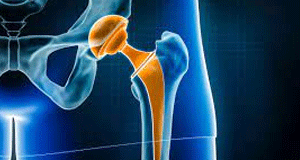
Arthroplasty is also called joint replacement, is surgery to replace a damaged joint with an artificial joint (made of metal, ceramic or plastic). Providers usually replace the entire joint (total joint replacement). Less often, they replace only the damaged part of the joint. Hips, knees and shoulders are the most common joints they replace.
Replacement arthroplasty, or joint replacement surgery, is a procedure of orthopedic surgery in which an arthritic or dysfunctional joint surface is replaced with an orthopedic prosthesis. Joint replacement is considered as a treatment when severe joint pain or dysfunction is not alleviated by less-invasive therapies.
Definition of arthroplasty is surgical joint replacement. During the procedure, your healthcare provider removes a damaged joint and replaces it with an artificial joint. The artificial joint (prosthesis) can be metal, ceramic or heavy-duty plastic. The new joint looks like the natural joint and moves in a similar way.
Orthopaedic Surgeries include arthroplasty
Surgeons can replace joints in any part of your body, but the most common types of arthroplasty are hip replacement and knee replacement.
Most people who get this procedure need a total joint replacement. A small number of people are good candidates for a partial joint replacement. This procedure only replaces the part of the joint that’s damaged. Recovery time for arthroplasty varies. It depends on your age and lifestyle, the type of procedure and the joint you have replaced.
Joint replacement procedures conducted by the Orthopedic Surgeon at Shreya Hospital can help you move without pain and stiffness. After a joint replacement, many people can take part in activities they once enjoyed. These surgeries greatly improve quality of life and overall health by allowing people to have an active lifestyle.
Shoulder Arthroscopy
Shoulder Arthroscopy
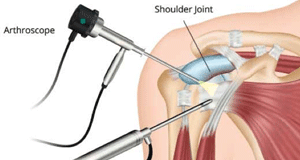
Shoulder arthroscopy is a type of surgery used to diagnose and treat shoulder problems. Orthopedic Surgeon at Shreya Hospital, Ghaziabad repairs your shoulder through tiny incisions. Shoulder arthroscopy is a procedure, meaning you can go home the same day. Though full recovery can take weeks or months, exercise and physical therapy can help with healing.
It is a minimally invasive surgery used to diagnose and treat shoulder problems. You might have arthroscopy for rotator cuff tears or shoulder impingement. Minimally invasive procedures require smaller incisions than traditional surgery. Each incision is about the size of a keyhole.
Orthopaedic Surgeries include Shoulder arthroscopy
Your surgeon inserts a small camera called an arthroscope through a tiny incision in your skin. This camera projects pictures of your shoulder joint to a video screen. Your provider looks at these images to find the source of your injury. If you need a shoulder repair, the provider uses miniature surgical instruments to restore your shoulder’s mobility.
Total Hip Replacement
Total Hip Replacement
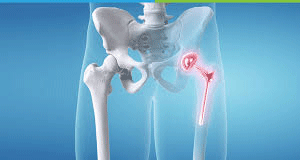
A hip replacement is a surgical procedure. An orthopedic surgeon will replace your hip (or parts of it) with a human-made implant (a prosthesis). Your surgeon might refer to a hip replacement as a hip arthroplasty (a joint replacement surgery).
Orthopedic Surgeon at Shreya Hospital will usually only recommend a hip replacement after other, more conservative treatments don’t relieve your pain or mobility symptoms. The recovery time can take up to 12 weeks, but most people who’ve had a hip replacement live with it for the rest of their lives. Surgeons perform more than 90% of hip replacements on adults older than 50.
Types of Hip Replacements (Orthopaedic Surgeries)
Your surgeon will perform either a total hip replacement or a partial hip replacement:
- Total hip replacement: A surgeon will replace your whole hip with a prosthetic joint. They’ll replace the top (femoral head) of your thighbone (femur) and the socket it fits into (acetabulum). Almost all hip replacements are total hip replacements.
- Partial hip replacement: Partial hip replacements are very rare. Your surgeon will replace only part of your hip. These are usually only done to repair certain types of broken hips (hip fractures) or to remove certain types of tumors.
Knee Replacement
Knee Replacement
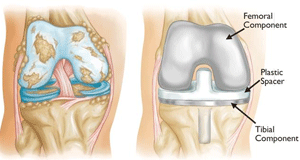
Knee replacement surgery (knee arthroplasty) is surgery to replace all or some of your knee joint. Your surgeon will replace damaged cartilage and bone with a prosthetic joint, made of metal and plastic. It can take up to a year to recover fully after a knee replacement, but you’ll be able to resume some of your usual activities gradually as you heal. It is the most common type of Joint Replacement Surgery.
Types of knee replacement
Your surgeon will recommend either a total or partial knee replacement:
- Total knee replacement: Total knee replacement is the most common type of knee replacement. Your surgeon will replace all three areas of your knee joint — the inside (medial), outside (lateral) and under your kneecap (patellofemoral).
- Partial knee replacement: A partial knee replacement is just what it sounds like. Your surgeon will only replace some areas of your knee joint — usually if only one or two areas are damaged. Partial knee replacements are more common in younger adults who’ve experienced an injury or trauma.
Conditions treated with a knee replacement
An Orthopedic Surgeon at Shreya Hospital might recommend knee replacement if you have severe symptoms that don’t get better after trying nonsurgical treatments, including:
- Joint pain.
- Stiffness.
- Limited mobility (trouble moving your knee).
- Swelling.
Knee Preservation
Knee Preservation

Knee preservation is a group of treatments to repair tissue damage or slow tissue breakdown. It can help you delay or avoid a knee replacement. You may have pain, stiffness, swelling, or difficulty moving if an injury or natural aging damages these tissues.
Shreya Hsopital in Ghaziabad is famouse for treatment of all Knee Conditions. Having a list of recovered patients through out Delhi , NCR and also all over India. Our dedicated team of Orthopedic Surgeon focus solely on treating patients with knee injuries. We use and research advanced techniques, offering eligible patients access to new treatments through clinical trials not available elsewhere in the region.
Orthopaedic Surgeries include Knee preservation
With knee preservation, we use nonsurgical and surgical treatments to repair or protect the tissues in your knee. Preservation treatments may be an alternative to knee replacement surgery for some patients. Our Orthopedic Specialist usually recommend knee preservation for patients younger than 50. We may offer these treatments to some patients older than 50, depending on their injury and activity levels.
Joint replacements is avoided in younger patients as much as possible because joint replacements only last a maximum of 10 to 20 years. We ideally reserve knee replacements for patients older than 50 who have little to no cartilage left in their knee.
Knee Arthroscopy
Knee Arthroscopy
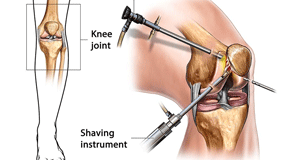
Knee arthroscopy is a minimally invasive surgical procedure. Healthcare providers use knee arthroscopy to diagnose and treat a range of knee injuries. Your healthcare provider makes a small incision and then inserts a long, thin tool with a camera on the end. The camera shows images of the inside of your knee, which helps your healthcare provider make a diagnosis of your injury.
Healthcare providers use knee arthroscopy to diagnose and treat a wide range of knee injuries. During arthroscopic knee surgery, your healthcare provider inserts a tiny camera through an incision. The camera shows the inside of your knee. The images appear on a screen in the operating room. They help your healthcare provider diagnose problems inside of your knee.
Orthopaedic Surgeries include knee arthroscopy
Knee arthroscopy is a very common minimally invasive surgical procedure. Minimally invasive procedures require smaller incisions (cuts) than traditional surgery. The incisions are about the size of a keyhole.
To treat injuries or structural problems, your healthcare provider inserts tiny tools through another incision. They use the tools to repair or remove damaged tissue.
Sports Injuries
Sports Injuries
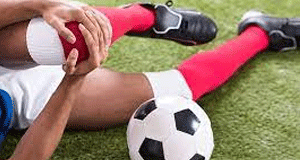
Orthopaedic Surgeries required for Sports injuries are common and can occur throughout your body to bones, muscles, tendons, ligaments and other structures. Exercise is important to good health, but people often get hurt when participating in sports or other physical activities. A sports injury involves damage to part of your body due to sports, exercise or athletic activities.
Sports injuries can happen to anyone, particularly people who:
- Are out of shape.
- Don’t wear proper protective equipment.
- Exercise without warming up and cooling down.
- Participate in contact sports that may involve tackling or collisions.
- Take part in activities that involve jumping, running and pivoting or changing direction quickly.
 Dr Dev Mishra Best Orthopaedic Doctor in Delhi NCR Ghaziabad
Dr Dev Mishra Best Orthopaedic Doctor in Delhi NCR Ghaziabad
